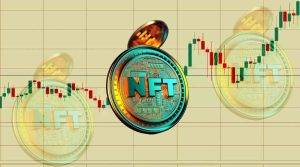False Rarity and NFT Market Manipulation: Discussing Strategies to Artificially Inflate Value

False Rarity and NFT Market Manipulation
In recent years, Non-Fungible Tokens (NFTs) have gained significant attention and popularity in the digital art world. NFTs offer a unique way for artists to tokenize and sell their digital creations, providing buyers with proof of ownership and authenticity. However, with the rise of NFTs, concerns about false rarity and market manipulation have emerged. This article delves into the strategies used to artificially inflate the value of NFTs, exploring the potential consequences and offering insights on how to navigate this evolving landscape.
Understanding NFTs and Rarity
What are NFTs?
NFTs, or Non-Fungible Tokens, are digital assets that use blockchain technology to certify their uniqueness and ownership. Unlike cryptocurrencies such as Bitcoin or Ethereum, which are fungible and can be exchanged on a one-to-one basis, NFTs represent one-of-a-kind items, including digital art, collectibles, music, and more.
The Concept of Rarity in NFTs
Rarity plays a vital role in the value proposition of NFTs. It relates to the scarcity of a particular item or edition within the NFT marketplace. The perception of rarity drives demand among collectors and investors, as owning something unique holds intrinsic value in the digital art world. Rarity in NFTs refers to the scarcity and uniqueness of a particular digital asset within the NFT marketplace. It plays a vital role in driving demand and value among collectors and investors. The concept of rarity is fundamental to the appeal and allure of owning exclusive and one-of-a-kind NFTs.
The Appeal of Rarity
Psychological Factors Driving Demand
Human psychology plays the most significant role in the appeal of rarity. The desire to own something exclusive and scarce taps into our innate need for status, individuality, and self-expression. Rarity creates a sense of elitism and social distinction, contributing to the allure of owning unique NFTs.
Scarcity and Exclusivity in the Digital World
In the physical world, scarcity is often a natural occurrence due to limited resources. However, in the digital realm, scarcity can be artificially manipulated, leading to challenges in determining true rarity. Digital scarcity relies on cryptographic technology and the limitations imposed by artists and platforms to create exclusivity.
False Rarity in NFTs
Minting Multiple Editions
Some artists and creators may undermine the concept of rarity by minting multiple editions of an NFT. By increasing the supply, they dilute the uniqueness of each item, reducing its overall value. This practice often deceives buyers who believe they are acquiring an exclusive piece.
Creating Artificial Scarcity
Conversely, artificial scarcity is another tactic used to create a false sense of rarity. Artists may limit the number of editions they mint or introduce time-limited releases, fostering a sense of urgency among buyers. While this strategy can drive up demand and prices, it can also lead to accusations of manipulation.
Influencer Endorsements and Hype
Influencers and celebrities can significantly impact the value of NFTs through endorsements and promotion. Their social influence and large followings create hype around specific artworks, driving up demand and prices. However, this form of artificial inflation can be volatile and unsustainable in the long run.
Market Manipulation
Pump and Dump Schemes
Pump and dump schemes involve artificially inflating the price of an NFT through coordinated buying and promotion. Once the price reaches a peak, the manipulators sell their holdings, causing the value to plummet. Unsuspecting buyers who enter the market late may suffer significant financial losses.
Collusion Among Artists and Collectors
Collusion between artists and collectors can lead to price manipulation and false rarity. By artificially inflating prices through coordinated purchases, artists and collectors can create an illusion of demand and rarity, enticing others to invest. This practice undermines the integrity of the NFT market.
Wash Trading and Fake Sales
Wash trading involves the creation of fake transactions to deceive potential buyers into thinking there is genuine market activity. Artists or collectors may engage in wash trading to give the impression of high demand and increase perceived value. These deceptive practices can mislead investors and damage market trust.

The Impact of False Rarity and Market Manipulation
- Loss of Trust and Reputation
False rarity and market manipulation erode trust within the NFT community. When buyers discover that an NFT they purchased is not as rare or valuable as advertised, it diminishes confidence in the market as a whole. Maintaining transparency and integrity is crucial for the long-term sustainability of the NFT ecosystem.
- Financial Risks for Investors
Investors who fall victim to market manipulation can suffer significant financial losses. Pump and dump schemes, in particular, exploit unsuspecting buyers who purchase NFTs at inflated prices. It is essential for investors to be aware of the risks and thoroughly research the assets they are considering.
- Implications for the Wider NFT Ecosystem
False rarity and market manipulation can have a broader impact on the NFT ecosystem. If the market is perceived as being rife with manipulation, it may deter new participants from entering the space. Regulators and industry stakeholders need to address these issues to ensure the long-term viability of the NFT market.
Strategies to Detect and Avoid Manipulated NFTs
- Thorough Research and Due Diligence
Buyers should conduct comprehensive research before purchasing an NFT. This includes verifying the artist’s reputation, examining their previous work, and assessing their involvement in past controversies. Engaging with the community and seeking opinions from trusted sources can provide valuable insights.
- Assessing Artist Reputation and History
Artists with a proven track record of creating valuable and authentic NFTs are more likely to maintain integrity. Checking an artist’s past sales, collaborations, and contributions to the community can help gauge their credibility and reduce the risk of falling victim to false rarity or manipulation.
- Analyzing Market Trends and Sales Data
Monitoring market trends and analyzing sales data can reveal patterns of manipulation. Sudden price spikes, abnormal trading volumes, or repetitive buying and selling patterns may indicate potential market manipulation. Keeping a close eye on such indicators can help identify and avoid manipulated NFTs.
Regulatory Measures and Industry Best Practices
Transparency and Disclosure Requirements
Regulatory bodies can introduce transparency and disclosure requirements to combat market manipulation. Platforms and artists should disclose relevant information about the rarity and supply of NFTs, ensuring that buyers have access to accurate and complete details before making a purchase.
Establishing Industry Standards
Collaboration among industry participants is crucial for setting and enforcing ethical standards. Industry associations, platforms, and artists can work together to establish guidelines that promote transparency, discourage market manipulation, and protect the interests of buyers and collectors.
Collaboration Between Platforms and Regulators
Platforms and regulators should collaborate to detect and address market manipulation effectively. Implementing robust monitoring systems and sharing information can help identify suspicious activities and take necessary actions to maintain market integrity. Regulatory oversight can also deter manipulative practices.
The Future of NFTs and Addressing Manipulation
Technological Advancements for Verification
Advancements in blockchain technology can enhance the verification process for NFTs. Immutable records on the blockchain can provide transparent ownership history and provenance, making it easier to identify and validate genuine artworks. Such technological solutions can help combat false rarity and manipulation.
Educating Buyers and Artists
Education plays a vital role in combating manipulation. Buyers and artists should be aware of the risks associated with false rarity and market manipulation. Platforms and industry organizations can contribute by providing educational resources, guidelines, and best practices to promote informed decision-making.
Building a Sustainable NFT Ecosystem
Sustainability in the NFT ecosystem requires the collective effort of all stakeholders. Establishing trust, maintaining transparency, and fostering ethical practices are essential for the long-term growth and stability of the market. By addressing false rarity and manipulation, the NFT industry can evolve into a more credible and resilient ecosystem.
Conclusion
False rarity and market manipulation pose significant challenges to the NFT market’s integrity and sustainability. Understanding the strategies used to artificially inflate the value of NFTs is crucial for buyers, artists, and regulators. By adopting best practices, promoting transparency, and leveraging technological advancements, the industry can overcome these challenges and create a more trustworthy and resilient NFT ecosystem.
FAQs (Frequently Asked Questions)
- Q: Are all NFTs susceptible to false rarity and market manipulation? A: While not all NFTs are affected, it is important to be vigilant and conduct thorough research before investing in NFTs.
- Q: How can I determine if an NFT has genuine rarity? A: Examining the artist’s reputation, supply details, and market trends can provide insights into the rarity of an NFT.
- Q: What should I do if I suspect market manipulation in an NFT? A: Report your suspicions to the platform and relevant authorities. Maintaining a strong community voice can also help expose manipulative practices.
- Q: Can regulatory measures alone eliminate false rarity and manipulation? A: Regulatory measures combined with industry collaboration, technological advancements, and buyer awareness can significantly reduce the impact of false rarity and manipulation.
- Q: Is the NFT market still a viable investment option despite these challenges? A: While there are risks associated with false rarity and manipulation, the NFT market continues to evolve and present opportunities. Diligence and informed decision-making are key to navigating this space successfully.

I’m known as one of the best crypto authors because I take time to understand the technology and write in a way that is easy for others to understand. I can simplify complex concepts and my writing style is engaging. My articles have been featured on some of the top crypto sites and I’mregularly sought out by readers for my insights on the latest news. I’m also a speaker and have discussed crypto at various conferences. If you’re looking for someone who can help you make sense of the ever-changing world of cryptocurrency, then you can get in touch with me.



